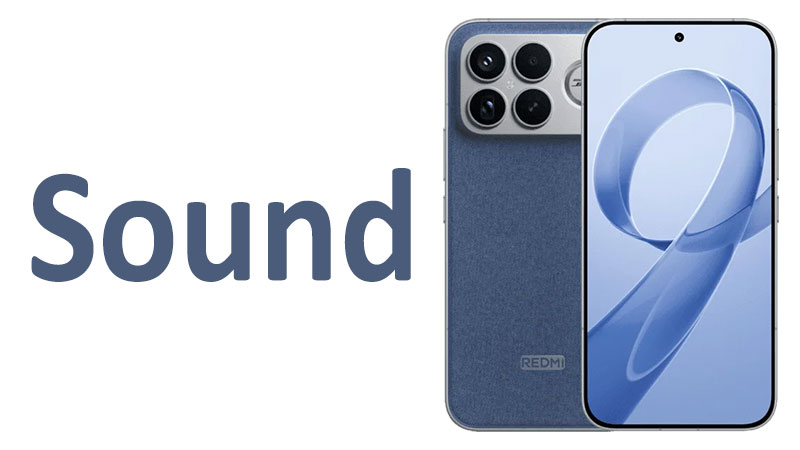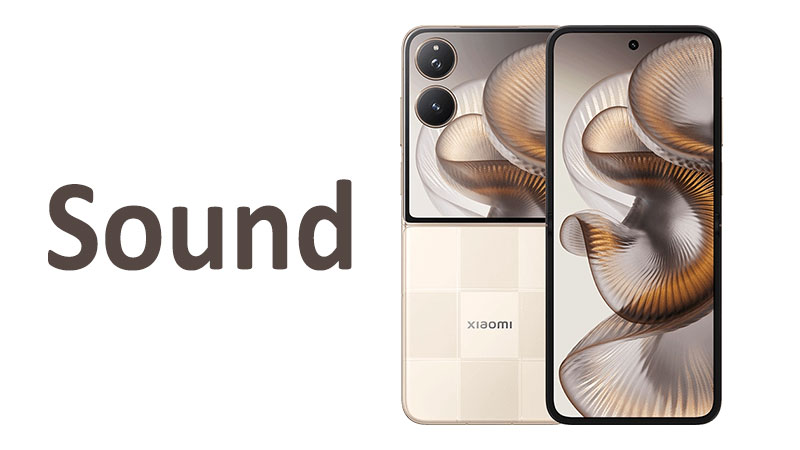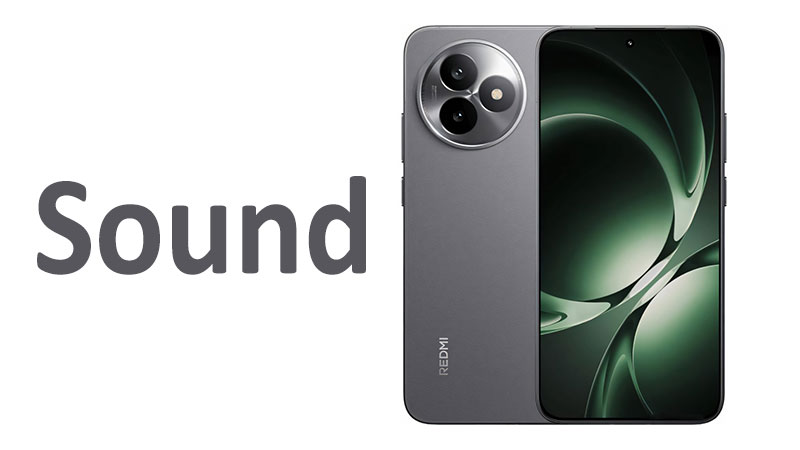The Xiaomi Redmi K90 Pro Max sound system represents a bold leap in mobile audio engineering. Modern consumers demand high fidelity sound from their portable devices. This flagship phone specifically addresses that demand with a premium, co-engineered audio solution. We will deliver a comprehensive, in-depth review of the phone’s entire sound performance. This includes an analysis of its revolutionary speaker design and its high-resolution audio support. Understanding these unique audio features is crucial for any potential buyer. This article explores how the K90 Pro Max sets a new, high standard for smartphone audio quality.
Unpacking the Revolutionary Bose 2.1 Speaker System
The K90 Pro Max audio system is built around a custom Bose 2.1 setup. This specific configuration is entirely unique within the entire smartphone market. Most competing phones rely only on a standard 2.0 stereo speaker system. The integration of a dedicated woofer changes the core performance dynamics dramatically. This innovative design successfully promises audio depth and richness previously unattainable in a slim phone chassis. This partnership with Bose elevates the device’s acoustic performance significantly.
The Woofer Advantage: Deep Bass in a Slim Design
The most significant feature is the inclusion of a dedicated woofer. Standard smartphone speakers, known as transducers, struggle to reproduce low-frequency bass notes. This is due to their small size and severely limited physical air displacement. The dedicated woofer overcomes this fundamental physical limitation effectively. It specifically handles the lower-frequency spectrum of the audio signal.
This woofer delivers a noticeable and impactful bass response. This means explosion sound effects in movies feel more visceral. Kick drums in music tracks gain a real sense of weight and powerful presence. The overall sound profile becomes instantly much fuller and more authoritative. The woofer integrates seamlessly with the two main stereo drivers. This creates a powerful, three-way mobile audio experience for the listener. The sonic result is surprisingly close to a dedicated, high-quality desktop speaker system.
Stereo Setup and Soundstage Clarity
The phone maintains a proper, high-quality stereo speaker configuration. This setup places one speaker driver at the top and another at the bottom of the device. This specific arrangement creates a wide, well-defined soundstage for the user. When watching a film or playing a game, the sound placement feels accurate and realistic. You can easily hear effects and dialogue moving across the screen space.
The two main stereo drivers focus on crisp, clear mid-range and high-frequency sounds. They handle voices, high notes, and subtle instrumental details perfectly. Their successful coordination with the new bass woofer is critically important. It ensures the high frequencies never become drowned out by the deep bass output. The resulting sound is meticulously balanced across the entire frequency range. This prevents the sound from becoming muddy or unclear at high volumes.
Specialized Comparison: K90 Pro Max vs. Standard Flagships
The K90 Pro Max immediately distances itself from all other major flagship competitors. Most rival phones, including those from Samsung and Apple, use excellent stereo-only systems. These conventional systems rely on sophisticated software tuning to achieve better bass response. However, they lack the inherent physical capability of a dedicated woofer driver.
The 2.1 system provides a tangible, physical advantage over purely software-driven solutions. You can hear this difference most clearly in powerful, complex music genres. These genres include electronic, hip-hop, and orchestral music performances. The K90 Pro Max provides a much more natural, resonant, and deeper low-end response. Competitors simply cannot match this low-frequency extension without external accessories. This unique hardware configuration establishes the K90 Pro Max as the clear leader in internal speaker performance.
Pros and Cons of the Speaker System
The integrated speaker system provides a remarkable acoustic experience.
Pros:
- Superior Bass Performance: The dedicated woofer delivers deep, impactful, and resonant low frequencies.
- Clear Soundstage: The stereo setup provides excellent channel separation for immersive media.
- High Maximum Volume: The entire system can achieve loud volumes without any noticeable distortion.
- Unique Hardware Design: The 2.1 system is a significant and powerful differentiator in the market.
- Balanced Frequency Output: The specialized tuning ensures a clear output across all audio ranges.
Cons:
- Physical Size Constraint: The internal woofer design may require more physical space inside the phone body.
- Potential Battery Draw: A dedicated three-driver system might consume slightly more power at maximum output.
- Placement Sensitivity: Covering the woofer vent accidentally can significantly reduce the bass performance.
The Audiophile’s Dream: Hi-Res Audio and Certification
The K90 Pro Max does not just excel with its internal speakers. It also champions high-fidelity audio output for headphones and other accessories. The phone is fully certified for 24-bit/192kHz Hi-Res audio playback. This certification confirms the device’s ability to process and output studio-quality audio streams. This level of detail is necessary for true music lovers.
Decoding the 24-bit/192kHz Standard
The “24-bit/192kHz” specification is the industry gold standard for superior digital audio quality. “24-bit” refers to the system’s high dynamic range and superior resolution. It allows the phone to successfully capture or reproduce subtle, extremely quiet sounds. “192kHz” denotes the high sampling rate of the system. This rate is far above the typical 44.1kHz rate found on CD-quality audio.
This elevated sampling rate allows the phone to accurately process a much wider range of frequencies. It notably extends well beyond the upper limit of human hearing ability. Technically, this ensures that no audible information is lost when processing the main signal. The overall result is a cleaner, far more detailed, and remarkably natural sound output. You hear the recorded music exactly as the artists intended in the studio.
Hi-Res Wireless Audio Explained
Crucially, the K90 Pro Max also supports Hi-Res wireless audio protocols. This is critical because many users prefer to use convenient Bluetooth headphones. Traditional Bluetooth connections often severely compress audio data. This compression leads to a noticeable and frustrating loss of overall audio fidelity.
However, the K90 Pro Max uses advanced, modern wireless codecs. These codecs include LDAC and likely aptX Adaptive or HD support. These codecs allow for the high-speed transfer of much larger data packets wirelessly. This capability maintains the near-lossless 24-bit audio quality even over a wireless link. The phone ensures users do not have to compromise sound quality for convenience. You can enjoy genuine high-resolution audio without any required cables.
Specialized Comparison: Wired vs. Wireless Hi-Res Experience
The audio experience on the K90 Pro Max blurs the traditional line between wired and wireless quality. In the past, wired connections were always deemed necessary for true high-resolution playback. This required a USB-C dongle connection for the best possible results. Today, modern codecs make the wireless experience nearly indistinguishable from a wired one.
For most casual listening scenarios, the high-res wireless performance is perfectly adequate. It provides incredible detail and a massive dynamic range wirelessly. The only minor advantage left for a dedicated wired connection is zero signal latency. Therefore, professional music producers may still prefer a wired connection for critical editing tasks. However, the average user will be thrilled with the phone’s exceptional wireless fidelity.
Pros and Cons of Hi-Res Audio Support
The phone’s certified audio hardware is a massive advantage for discerning users.
Pros:
- Studio-Grade Fidelity: 24-bit/192kHz support guarantees extremely high-quality audio playback.
- Superior Wireless Sound: Hi-Res wireless codecs ensure the best sound via Bluetooth headphones.
- Future-Proof Technology: The high processing power supports upcoming ultra-high-resolution streaming standards.
- Enhanced Listening Detail: It makes subtle instrumental and vocal nuances much clearer to the listener.
- Clear Certification: The Hi-Res certification provides confidence in the technical specifications.
Cons:
- Requires High-End Accessories: Users need specialized Hi-Res headphones to hear the entire benefit.
- Large File Sizes: High-resolution audio files (FLAC, MQA) consume significantly more storage space.
- Data Consumption: Streaming Hi-Res audio requires much more mobile data or faster Wi-Fi speeds.
Software Synergy: Dolby Atmos and Bose Tuning
Hardware alone does not define the entire audio experience for the user. The successful integration of advanced software processing is also absolutely essential. The Xiaomi Redmi K90 Pro Max pairs its exceptional Bose hardware with two key software technologies. These are the powerful Dolby Atmos processing and the specialized Bose audio tuning. This creates a deeply sophisticated and fully optimized audio environment.
Immersive Soundscapes with Dolby Atmos
Dolby Atmos is an industry-leading immersive audio technology. The K90 Pro Max utilizes this technology to create a three-dimensional, highly spatial sound experience. This is especially effective when consuming content like movies and supported music tracks. Dolby Atmos makes you feel completely surrounded by the sound effects and the ambient score.
The technology adds height and specific positional information to the normal stereo sound field. For example, a helicopter sound effect moves realistically above and behind the user. This greatly enhances the sense of immersion during high-action video gameplay sessions. The inclusion of Dolby Atmos is a clear necessity for any modern premium smartphone. It successfully leverages the powerful multi-driver speaker system for maximum effect.
The Signature Sound: Bose Tuning and Calibration
The crucial partnership with Bose goes far beyond mere hardware integration. Bose also provided specialized, expert tuning and calibration for the entire system. This collaboration ensures the K90 Pro Max delivers a signature sound profile. This tuning focuses heavily on maintaining both clarity and a neutral, balanced sound output.
Bose engineers finely tune the digital signal processing (DSP) specifically. This processing minimizes any harsh frequencies or annoying distortion at high volumes. Their professional calibration guarantees a consistently accurate sonic response. The result is a sound that remains vibrant and detailed without sounding artificial or overly processed. This careful tuning provides a clear, high-quality audio performance right out of the box.
Specialized Comparison: Dolby Atmos vs. Competitor Spatial Audio
Many competitor flagships also include various forms of spatial audio technology. These features often include proprietary standards developed internally by the manufacturer. However, the K90 Pro Max benefits from the highly standardized Dolby Atmos platform. Dolby Atmos offers a much larger and rapidly expanding library of natively supported media content.
The combination of the dedicated 2.1 woofer system and Atmos creates an undeniable advantage. The enhanced bass frequency from the woofer gives the entire spatial effect more physical grounding. This results in a truly more convincing and deeply enveloping audio experience. Competitors often struggle to provide this level of low-end depth in their spatial audio outputs. The specialized Bose tuning also gives the K90 Pro Max a refined sound signature.
Pros and Cons of Software Integration
The phone’s software stack enhances the capabilities of the premium hardware.
Pros:
- Superior Spatial Immersion: Dolby Atmos creates a highly convincing 3D audio environment for media.
- Professional Sound Calibration: Bose tuning ensures a balanced, high-fidelity, and consistent sound profile.
- Wide Content Support: Dolby Atmos enjoys broad support across all major streaming platforms globally.
- Optimized Speaker Performance: The DSP minimizes distortion, maximizing the utility of the 2.1 system.
- Dynamic Adjustment: The system can adjust the sound in real-time based on the content being played.
Cons:
- Requires Native Content: The full spatial effect only works when streaming content is specifically encoded with Dolby Atmos.
- Potential Over-processing: Some audiophiles might prefer a completely raw, untuned audio output setting.
- System Dependency: Any future MIUI updates must maintain the specific Bose tuning parameters precisely.
A Balanced Look: Pros, Cons, and Buyer Insights
The Xiaomi Redmi K90 Pro Max sound system represents a clear technological statement. It showcases Xiaomi’s commitment to providing an unparalleled audio experience for users. However, this level of premium performance comes with specific design choices and trade-offs. Prospective buyers must fully weigh all these factors before they make their final purchase decision.
Pros of the K90 Pro Max Audio System
The list of advantages is extensive for audio enthusiasts and dedicated media consumers.
- Unmatched Bass Output: The revolutionary 2.1 system provides a deep bass that other phones cannot physically replicate.
- Exceptional Audio Quality: Support for 24-bit/192kHz ensures studio-level fidelity both wired and wirelessly.
- High-End Partnership: The Bose tuning ensures a refined, consistent, and professionally balanced sound.
- Universal Immersion: Dolby Atmos creates an expansive, cinematic experience for films and games.
- Versatile Wireless Connectivity: Advanced Hi-Res codecs deliver pristine sound without relying on any cables.
- Loud and Clear Speakers: The system can achieve high volume output while maintaining minimal distortion levels.
Cons and Compromises
Two main compromises are instantly apparent in the K90 Pro Max audio design.
- No 3.5mm Headphone Jack: The phone completely omits the traditional 3.5mm headphone port. This forces users to adopt either wireless headphones or a USB-C adapter accessory.
- Omission of FM Radio: The device does not include an integrated FM radio function. Some users still rely on this for non-data entertainment or emergency information access.
- High Requirement for Full Performance: Achieving peak audio quality demands the user invest in costly high-resolution headphones.
Essential Takeaways for Audio Buyers
Buyers need to carefully consider their personal usage habits before selecting this phone model. The K90 Pro Max clearly caters to a distinct, high-fidelity demographic. It is the perfect choice for users who prioritize speaker sound quality above all else.
If you watch many movies or play graphic-intensive mobile games frequently, the 2.1 system is an absolute game-changer. It dramatically enhances the entire sensory experience. Similarly, if you already own high-end Bluetooth headphones, the Hi-Res wireless support is invaluable. It unlocks the true potential of your expensive equipment.
However, the lack of the 3.5mm jack is a non-negotiable factor for some traditional audiophiles. They must be willing to use an adapter or fully convert their equipment to the USB-C standard. If you must use a specific set of legacy wired headphones, the adapter becomes an essential daily accessory. Ultimately, the K90 Pro Max offers a cutting-edge sound experience. This experience simply requires a minor lifestyle adjustment to fully embrace its wireless focus.
Conclusion: Making an Informed Audio Decision
The Xiaomi Redmi K90 Pro Max sound architecture is undeniably best-in-class within the smartphone market. The successful collaboration with Bose results in a truly groundbreaking 2.1 stereo speaker system. This unique design provides powerful bass and an expansive, detailed soundstage for all media. Furthermore, the 24-bit/192kHz Hi-Res certification guarantees exceptional audio fidelity. This capability extends seamlessly to high-res wireless audio streams using advanced, specialized codecs.
The software side is equally robust and highly professional. It includes the highly immersive and industry-standard Dolby Atmos spatial technology. The professional, detailed tuning provided by Bose engineers ensures consistent clarity and dynamic balance. This results in an audio output that is both clean and highly engaging. The phone’s audio compromises are few but entirely significant. The complete omission of the traditional 3.5mm headphone jack is the major design trade-off.
For consumers who actively seek the absolute best possible speaker performance and high-resolution wireless audio, the K90 Pro Max is the standout choice. Its impressive audio quality surpasses nearly all current competing flagship models. It successfully provides a luxurious listening experience for both music and all video media. Buyers who can successfully move past the lack of the legacy headphone jack will find the K90 Pro Max a stellar investment. It truly delivers an unparalleled mobile acoustic experience.
Frequently Asked Questions (FAQ)
Does the Xiaomi Redmi K90 Pro Max have a 3.5mm headphone jack?
No, the K90 Pro Max does not include a 3.5mm headphone jack. You must use Bluetooth or USB Type-C connections for all wired audio.
What is the advantage of the Bose 2.1 speaker system?
The 2.1 system includes a dedicated woofer. This physical component allows the phone to successfully produce deeper, much more powerful bass than standard 2.0 stereo phones.
Does the K90 Pro Max support high-resolution audio files?
Yes, the phone is fully certified for 24-bit/192kHz Hi-Res audio. This ensures studio-quality playback with high detail and a superior dynamic range.
Which spatial audio technology does the phone use?
The phone fully supports Dolby Atmos technology. This feature creates a highly immersive, three-dimensional sound experience for compatible movies and music.
Is the sound quality the same for wired and wireless headphones?
The Hi-Res wireless audio codecs bring the quality extremely close. However, only wired connections guarantee zero latency and the most technically pristine signal for professional use



